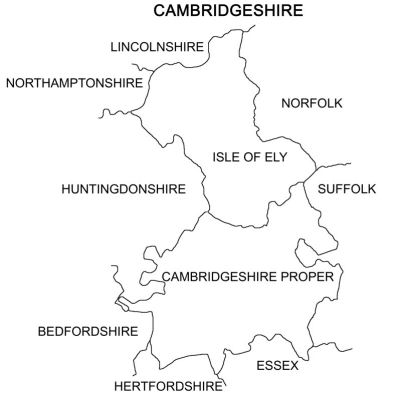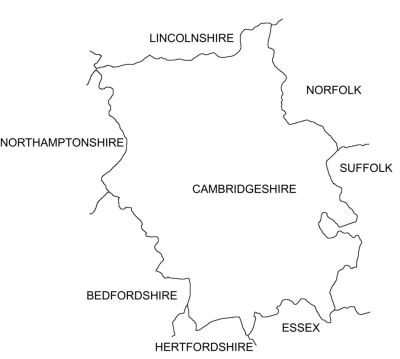1. Introduction
The study seeks to document morphosyntactic features peculiar to Cambridgeshire dialect speech. The term dialect has several definitions, but in the present study dialect will be taken to refer to a regionally and socially distinctive variety of a language, identified by a distinctive pronunciation and by particular grammatical structures and vocabulary (cf. Crystal 1980 dialect (n.)). Dialects are also referred to as non-standard varieties of a language, differing from the standard variety, which is usually associated with the notion of prestige. In this study, the term non-standard is used as a neutral term, with no implication that the dialect investigated ‘lacks standards’ in any linguistic sense. The term non-standard functions as an alternative to the term dialect. The term sub-standard (e.g. Petyt 1980: 7), which has sometimes been used as equivalent to non-standard, is rejected, since it may be thought to have pejorative associations.
The study is essentially a synchronic description of the Cambridgeshire dialect. The material consists of free dialect speech collected in the 1970s by interviewing local residents of rural Cambridgeshire. The recorded interview material was transcribed in its entirety. In writing this Grammar, the fieldwork and transcription are described at some length, since these aspects are closely bound up with the material for the study.
The area of Cambridgeshire referred to in this study is that referred to in Orton et al.’s Survey of English Dialects (SED) (1962-1971). The county structure referred to in Wright (1898-1905), Lowman (1909-1941; in Viereck 1980), the SED and the present study is now historical. My fieldwork in Cambridgeshire started in 1974, but for the sake of easier comparison with the SED and other earlier material, I decided to adhere to the pre-1974 county boundaries – although I am aware that this may, to a certain extent, complicate comparisons with material which defines the area according to the post-1974 administrative boundaries (see Map 1.2).
Cambridgeshire includes two shires or separate jurisdictions, the shire proper and Ely. The fieldwork for the present study was carried out in Cambridgeshire proper (henceforth called Cambridgeshire). The counties bordering Cambridgeshire (clockwise from the north) are Lincolnshire, Norfolk, Suffolk, Essex, Hertfordshire, Bedfordshire, Huntingdonshire, and Northamptonshire (see Map 1.1)

Map 1.1. Cambridgeshire according to the pre-1974 county boundaries.
In the 1974 reorganization several counties disappeared, new ones were formed, and boundary adjustments were made; Huntingdonshire, the Isle of Ely, and the Soke of Peterborough were all absorbed into Cambridgeshire.

Map 1.2. Cambridgeshire according to the post-1974 county boundaries.
|

